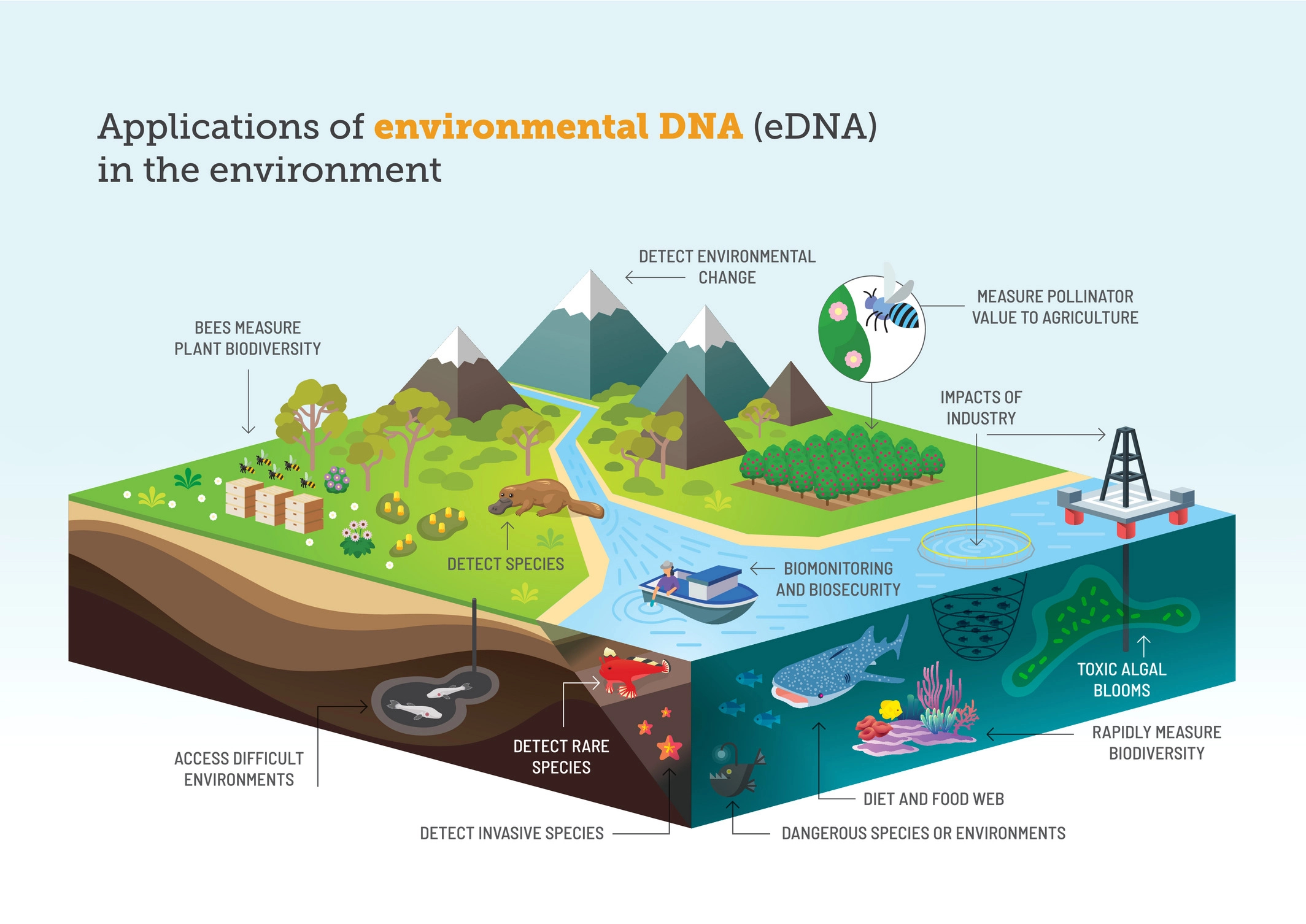
We can purify eDNA from environmental samples, such as water or soil, and sequence it to identify the presence or absences of species in a location. This is done by comparing eDNA to reference sequences for different species, which are known as DNA barcodes.
eDNA is increasingly being used around the world in very diverse ways, including:
- detecting biosecurity pests
- surveying the fish species present on reefs
- detecting viruses like SARS-CoV2 in wastewater
- searching for cryptic species like the platypus
- measuring the productivity of fisheries
- mapping species distributions
- detecting rare and endangered species
At CSIRO, our expertise in eDNA spans many areas. The potential applications are enormous.
Talk to us about how we can help - whether you work in freshwater, marine, microbial or terrestrial systems.
We can purify eDNA from environmental samples, such as water or soil, and sequence it to identify the presence or absences of species in a location. This is done by comparing eDNA to reference sequences for different species, which are known as DNA barcodes.
eDNA is increasingly being used around the world in very diverse ways, including:
- detecting biosecurity pests
- surveying the fish species present on reefs
- detecting viruses like SARS-CoV2 in wastewater
- searching for cryptic species like the platypus
- measuring the productivity of fisheries
- mapping species distributions
- detecting rare and endangered species
At CSIRO, our expertise in eDNA spans many areas. The potential applications are enormous.
Talk to us about how we can help - whether you work in freshwater, marine, microbial or terrestrial systems.
Freshwater eDNA
Dr Gavin Rees
Team Leader (Land & Water)
Marine eDNA
Dr Annette McGrath
Team Leader (Data61)
Microbial eDNA
Dr Gavin Rees
Team Leader (Land & Water)
